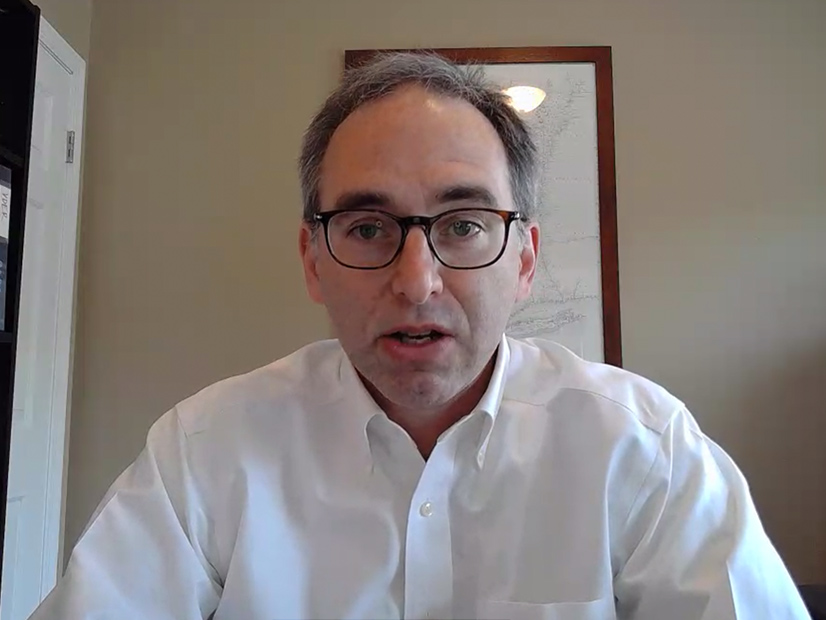Clean energy advocates and solar developers told New York officials to tweak the value of distributed energy resources (VDER) tariff on environmental value rather than make complicated new processes to sustain PV growth.
“We have a successful program and paradigm in place, and VDER is looked to by other states as a model policy and held up as an innovative way for compensating DERs based on actual value,” Kaitlin Kelly O’Neill, Northeast regional director of the Coalition for Community Solar Access, said Friday.
O’Neill spoke at the second of two technical conferences on VDER, especially community distributed generation (CDG) solar, hosted by New York State Energy Research and Development Authority (NYSERDA) and Department of Public Service (15-E-0751).
The state’s investor-owned utilities said in a joint presentation that no single technology will tackle the state’s climate challenge and recommended that regulators be open to all types of renewable energy.
New York’s Climate Leadership and Community Protection Act (CLCPA) requires the state to consume 70% renewable electricity by 2030, switch to 100% zero-emission power by 2040 and reduce greenhouse gas emissions to 85% below 1990 levels by midcentury. The CLCPA also calls for the procurement of 6 GW of solar by 2025, 3 GW of storage by 2030, and 9 GW of offshore wind by 2035.
Beyond Targets
“We’re really asking, ‘What are we doing post-6 GW?’” David Sandbank, NYSERDA vice president for DER, said in chairing the meeting and highlighting the presentations given during the conference.
The first conference on April 21 addressed potential ways to continue advancing commercial, industrial and community solar development.
The May 7 session looked at commercial, industrial and CDG policy options for pricing externalities, i.e., via monetary cost of damages or the marginal abatement cost. DPS staff will issue a white paper that incorporates comments submitted by stakeholders. (See NY Works to Sustain Community Solar Growth.)
With the state needing to add 2.5 to 3 GW of renewable energy capacity every year from now to 2050 to achieve its climate goals, it’s no surprise that New York is going to need more than 6 GW of solar to meet 2040 zero emissions electricity sector goals, said Sam Jasinski, director of Northeast policy and business development at Borrego Solar.
Borrego received its first NYSERDA large-scale renewable contract in February for the 110-MW Rutland Center Solar 1 project, “but there’s a lot left for us and everyone else to learn about how to bring these promising utility-scale solar projects to market, and how much it’s ultimately going to cost to do that,” Jasinski said.
Borrego agreed with a DPS recommendation to update the environmental value in the existing value stack. DPS on April 21 issued an updated value at $31.03 per MWh, up from the previous $27.41 per MWh due to a higher social cost of carbon (SCC) over time and based on the 20-year period from 2022 to 2041.
In addition, Jasinski urged regulators to preserve market continuity by making eligible those projects that missed out on the community adder or base MW block incentives.
Utility Perspective
The presentations at the conference had a lot in common despite perceived differences, said Stephen Wemple, Con Edison vice president of regulatory affairs.
“I think everybody agrees that distributed solar is an important tool and part of the CLCPA that has helped us get to the 6 GW target,” Wemple said. “It can and should continue to play a big role as we go forward.”
However, it is important to recognize that CDG may have some limitations, he said, advocating a holistic approach to a “distributed renewables market, not just distributed solar.”
“There are other emerging renewable technologies, whether it’s tidal turbines in the East River, or upstate agriculture applications to capture methane on dairy farms, and even rooftop wind turbines in New York City as well as ground-mounted wind turbines in peoples’ back yards upstate,” Wemple said. “From our perspective, we need all-of-the-above to get to some of those CLCPA goals.”
One of the strong points of the value stack is its application to new technologies, such as potential injections from electric vehicle charging stations, said Toby Hyde, principal strategy and policy analyst at National Grid.
While NYSERDA support for new renewable energy projects would better allocate costs statewide and avoid over-burdening customers of one company, the joint utilities said they “do not have a fully-baked solution to offer,” but will collaborate with all other stakeholders.






